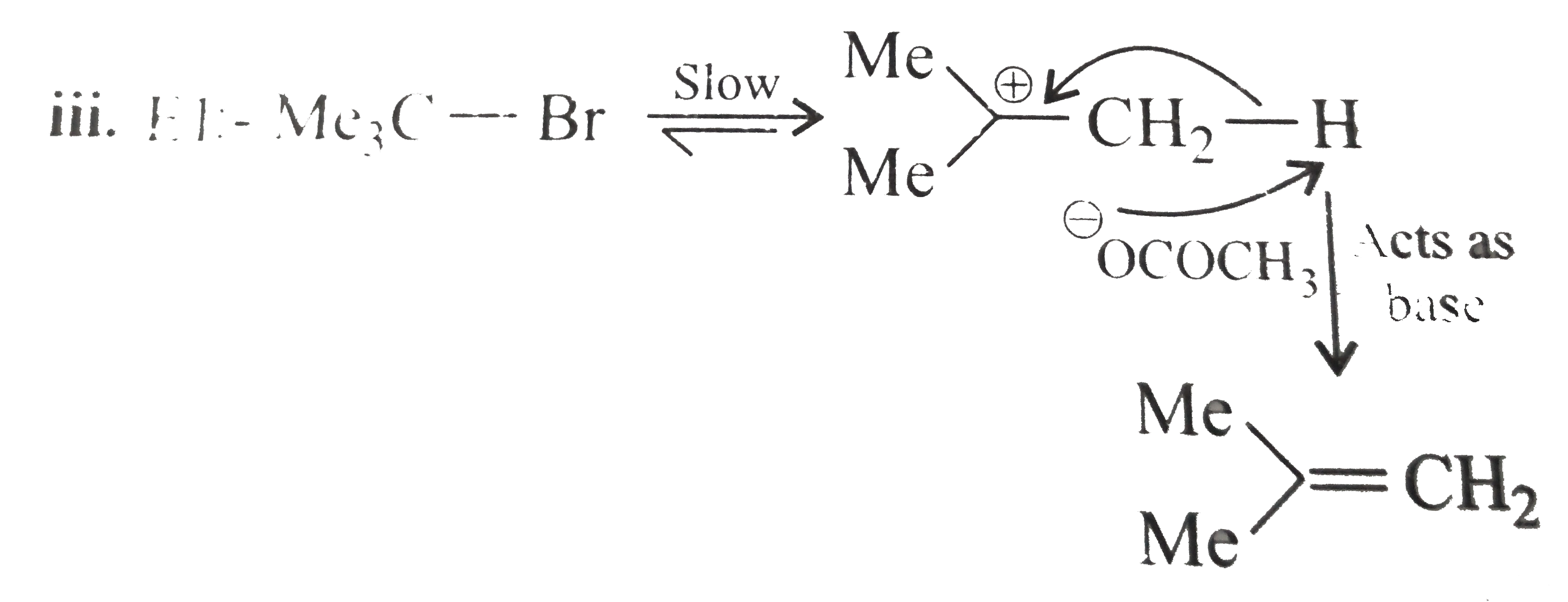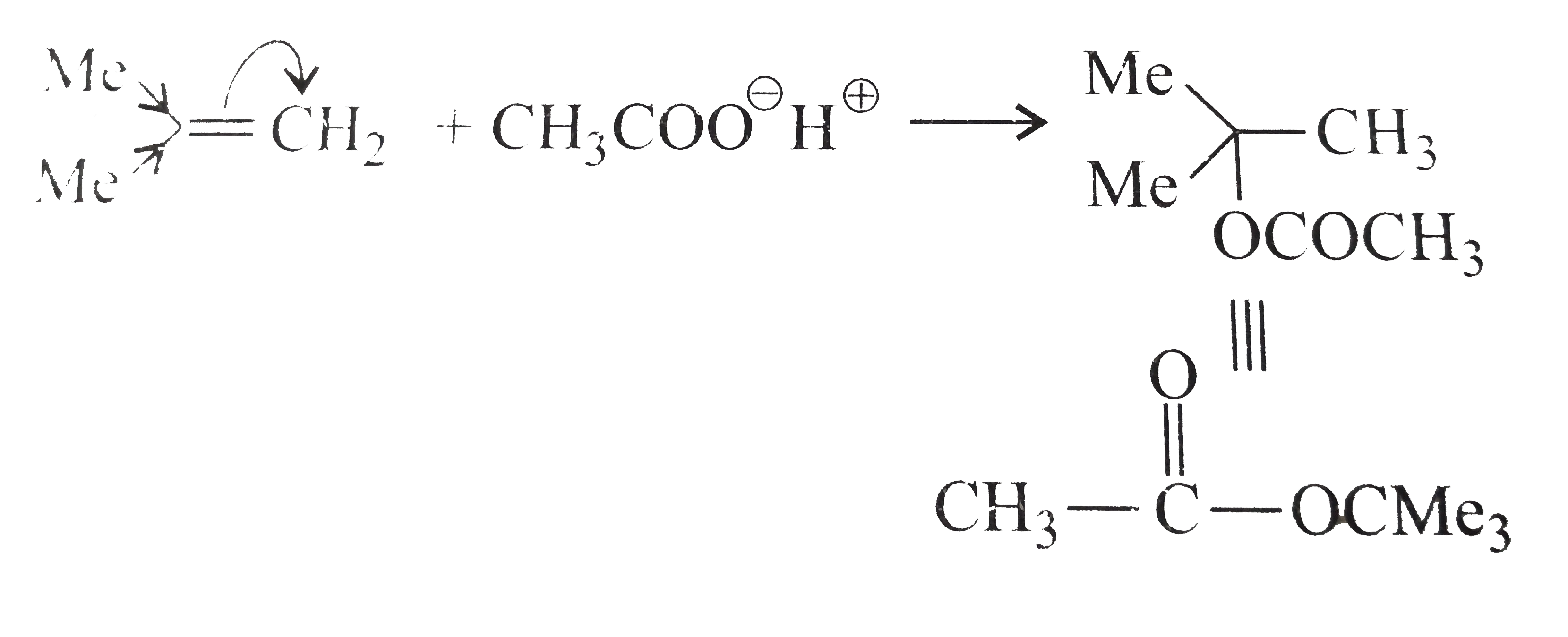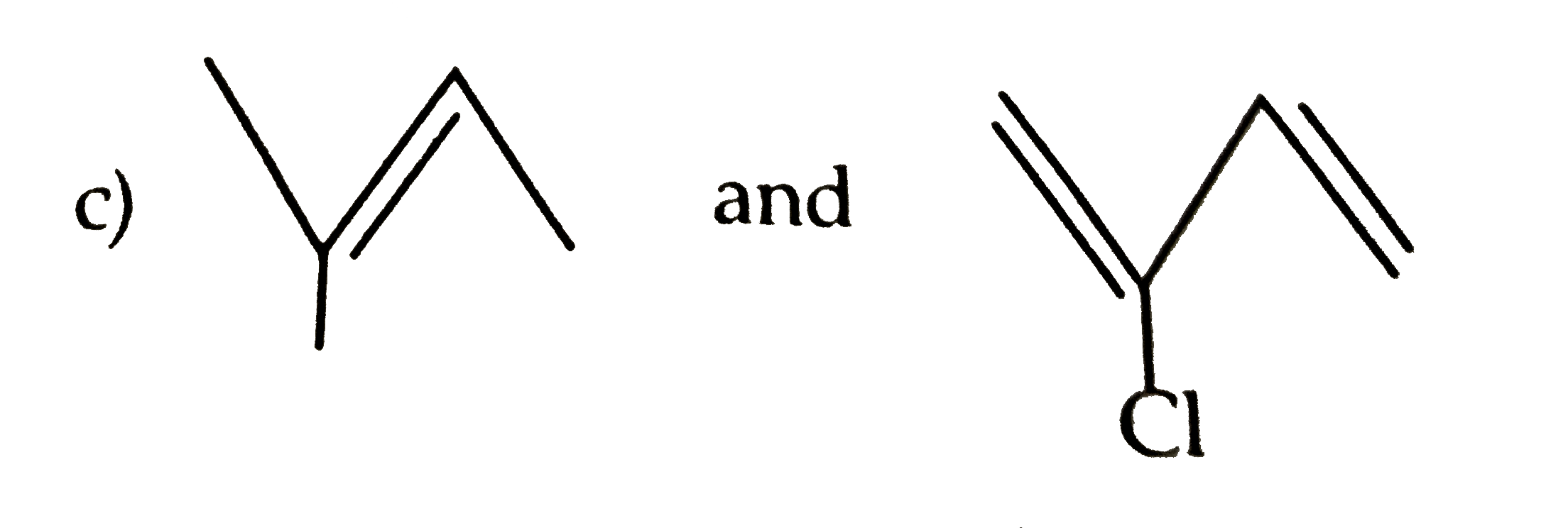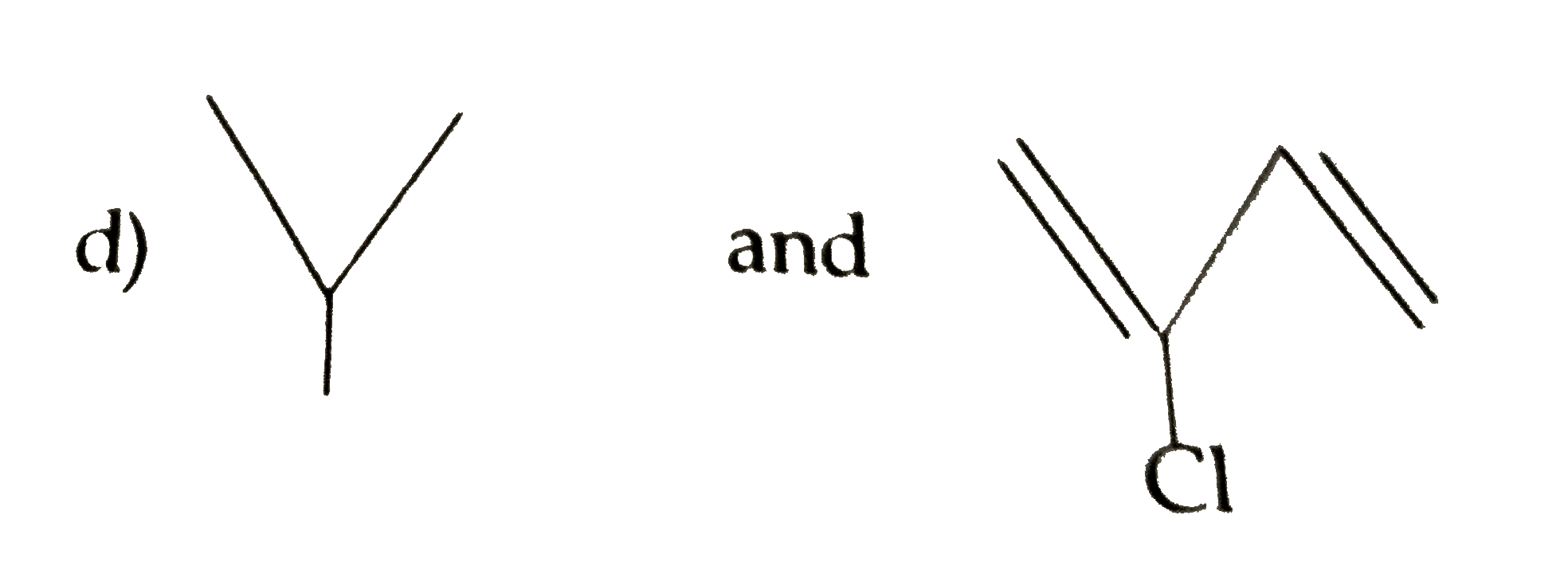Explain the following :
(a) Esters can be prepared by the reaction of RCOOH and R'X in basic medium. Why is this method not suitable for the preparation of t−butyl ethanoate ?
(b) How is t−butyl ethanoate prepared ?
( c) Explain the rate esterification of the following acids with MeOH.

(d) Why cannot HCl be used for the conversion of RCOOH to RCOCl ?
( e) Why can esters be prepared more efficiently by the squence : RCOOH→RCOCl→RCOOR', rather than RCOOH→RCOOR' ?
(f) Why are acyl azides less reactive than ROCOCl but a little more reactive than anhydride ?
Ka of N3H=2.6×10−5 and Ka of CH3COOH=1.8×10−5.
Video Solution
Text Solution
(a) (i) 
(ii) 
(iii) 
The carboxylate anion (I) is sufficiently basic and it would bring about the elimination in 3∘ alkyl halides.
(b) It can be prepared by the Markovnikov's addition of CH3COOH with isobutene.

( c) More the EDG, lesser favoured is the reaction (esterification). More the EWG, more favoured is the reaction.
ED power [(+I) effect] increases from (I) to (IV). So the rate of esterification of (I)>(II)>(III)>(IV).
Alternatively,as the size of substituents on the α−C atom increases, the tetrahedrally bonded intermediate becomes more sterically hindered. The greater the crowding, the more sterically hindered. The greater the crowding, the larger is ΔH of the activation of the transition state and the slower is the reaction.
(d) The reaction of RCOOH with HCl to give RCOCl and H2O is a reversible reaction. RCOCl and H2O react rapidly to give starting material. H2O cannot be removed as it is formed as in the case of ester formation because HCl(g) would excape.
RCOOH+HCl⇔RCoCl+H2O.
( e) Reaction of RCOOH with R'OH is slow, and the equilibrium must be shifted to the right by removing H2O.
RCOOH+R'OH⇔RCOOR'+H2O
RCOCl is easily prepared under non-equilibrium conditions if SOCl2 is used. The exothermic reaction of RCOCl with an alcohol completes by evolving HX(g).
RCOCl+R'OH→RCOOR'+HCl,ΔH= negative.
(f) N3H is slightly more acidic than CH3COOH.NӨ3 is slightly less basic than CH3COOӨ and , therefore, NӨ3 is a slightly better leaving group. RCON3 is thus less reactive than RCOCl but a little more reactive than the anhydride.
|
Topper's Solved these Questions
- CARBOXYLIC ACIDS AND THEIR DERIVATIVESBOOK - CENGAGE CHEMISTRYCHAPTER - CARBOXYLIC ACIDS AND THEIR DERIVATIVESEXERCISE - Solved Examples
17 Videos
- CARBOXYLIC ACIDS AND THEIR DERIVATIVESBOOK - CENGAGE CHEMISTRYCHAPTER - CARBOXYLIC ACIDS AND THEIR DERIVATIVESEXERCISE - Exercises (Subjective)
19 Videos
- BIOMOLECULES, POLYMERS AND CHEMISTRY IN EVERYDAY LIFEBOOK - CENGAGE CHEMISTRYCHAPTER - BIOMOLECULES, POLYMERS AND CHEMISTRY IN EVERYDAY LIFEEXERCISE - QUESTION BANK
8 Videos
- CHEMICAL KINETICSBOOK - CENGAGE CHEMISTRYCHAPTER - CHEMICAL KINETICSEXERCISE - Archives Subjective
23 Videos
Similar Questions
Knowledge Check
Monomer used for preparation of butyl rubber is
A B
B C
C D
D
Which of the following can be prepared by the reduction of a phenyl ester?
ACH3CH2CHOHCH2BCH3CH2CH2CH2OHC(CH3)3COHDCH3CHOHCH3Tertiary butyl alcohol can be prepared by the reaction of
Aacetadehyde and ethyl magnesium iodideBacetone and methyl magnesium iodideCformaldehyde and propyl magnesium iodideDbutanone and methyl magnesium iodide.
Why halogenation of Alkane is not suitable method for preparation of Alkyl halide ?
View SolutionWhich of the following methods cannot be used for the preparation of an ester?
View SolutionWhich of the following statements is/are correct about the preparation of t-butyl ethanoate.
 .
.
View SolutionWhich of the following method cannot be used in the preparation of acid
View SolutionWhich of the following reaction cannot be used for the preparation of alkane?
View Solution
